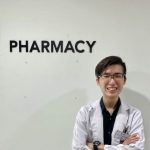PRP FAQ Series: R&D Academia

In this series, ex or current Provisionally Registered Pharmacists (PRPs) will share their experiences in respective industries across the pharmacy landscape in Malaysia. This article will be focusing on PRP-ship in R&D Academia.
Recently, the government has opened a new PRP pathway in R&D Academia. If you are considering doing your PRP-ship in R&D Academia, we hope these frequently asked questions (FAQs) will provide a helpful overview of it.
1. What is the process like to go from PRP to FRP in R&D Academia?
The PRP programme comprises 9 months of research work and 3 months of hospital attachment, making up a total of 12 months.
The 9-month research work includes drafting proposals, conducting your research project, and publishing articles; while the 3-month hospital attachment includes outpatient, inpatient and ward rotation (depending on the hospital).
The whole PRP journey will take around 1 year to complete. After fulfilling all the requirements, you will become a Fully Registered Pharmacist (FRP).
You can refer to the PRP logbook here.
A bonus that this route offers is that upon completion of this journey, you will be a Master’s degree holder and a registered pharmacist, just like the saying goes “kill two birds with one stone”!
2. What department will I be rotated to during the 3-month hospital attachment?
You will usually be rotated to outpatient department (OPD), inpatient department (IPD) and clinical attachment.
It is advisable for you to have pharmacy-related apps (e.g. Blue Book, Micromedex, Renal Dose, Drug Counselling, Lexicomp, UpToDate).
Do note that it depends on the hospital to allocate your attachment duration in each department.
3. Which university accepts PRP in R&D Academia?
You can check the universities that accept PRP in R&D Academia via this link.
It is important to note that different universities may accept different numbers of PRPs depending on the number of registered preceptors available.
4. Which Master’s programme should I choose?
This is highly dependent on the course structure in the respective universities. Thus, it is strongly advisable that you perform the necessary due diligence to ensure the specific programme meets your needs.
Courses may range from 1.5 years which could include 1 year of coursework and 6 months of research, to a full research programme which has no taught components.
5. Sounds great! How do I apply?
- Apply for PRP number via PRISMA using certified copy of academic transcript, letter of study completion/graduation certificate and qualifying exam certificate.
- Think of which university you would like to pursue your PRP in as well as the project that you would like to pursue.
- Apply and wait for your university to assign a preceptor to you.
- Fill in the form (Borang Kelulusan Lembaga Farmasi Malaysia (LFM) untuk Menjalani Latihan PRP di FLL) which you can download from PRISMA’s correspondence.
- Email the form and appointment letter issued by the university to LFM.
- After receiving a reply regarding your PRP start date from LFM, you can start PRP while emailing back to LFM with Borang PRP (II) – download the notification of training form from PRISMA email.

6. What are the tips to excel as PRP in academia?
- Have clear goals and a good research plan. Try to plan and list down everything in detail to keep your PRP/ master programme on track.
- Good time management.
- Self-discipline. Your supervisor’s role is not to babysit you and hence, taking accountability through active initiatives are needed as you work through your research project.
- Work fast and work smart.
- Be diligent. Learn all you can in the one year of PRP-ship as you will go through all sorts of different departments. It will be advantageous towards your career as a pharmacist.
- Learn to be a problem-solver. Road bumps are a given in research and in these occasions, it is essential that you grit your teeth and tackle these issues head on. As Confucius once said, “Our greatest glory is not in never falling, but in rising every time we fall.”
- Logbooks are important, but so is rest/leisure. You only do your PRP once, so do have fun in the process!
- Build your network for the future and develop your soft skills as a pharmacist.
Conclusion
Just like other pathways, doing PRP in R&D Academia has its own ups and downs. If obtaining a Master’s degree on top of PRP-ship sounds exciting to you, perhaps you should consider this novel option. It may be the road less travelled, but it is rewarding for those who are passionate in research and development.
This article is contributed by Vanessa Liew (former PRP in academia, IMU) and Lesley Pua (former PRP in academia, IMU).
These tips and tricks are based on our experiences and these may differ depending on facilities, so it’s best to reach out to PRP seniors in your universities.
The opinions expressed in the article are the writers’ own and do not reflect the view of MPS YPC.

Vanessa Liew is pursuing her Master’s at International Medical University (IMU). She was formerly a PRP at IMU. Her research interests include cancer, formulation, photodynamic therapy, drug discovery and development as well as cell culture.

Lesley Pua also pursues his Master’s at International Medical University (IMU). He was formerly a PRP at IMU. His research interests include cancer biology, bioinformatics, cell and molecular biology.













